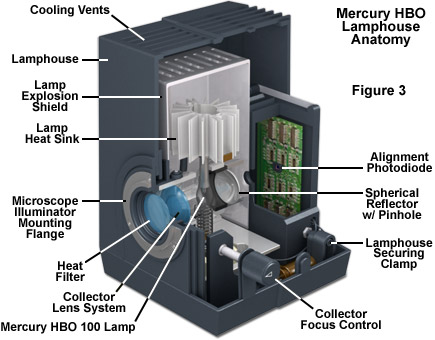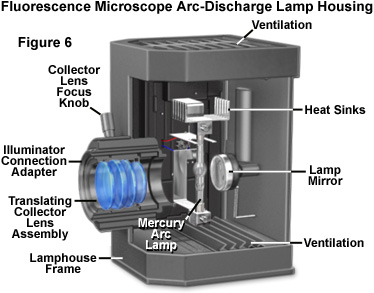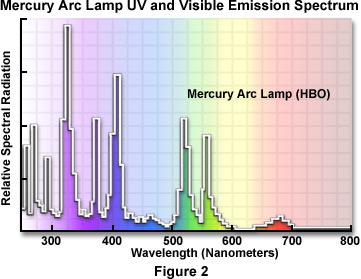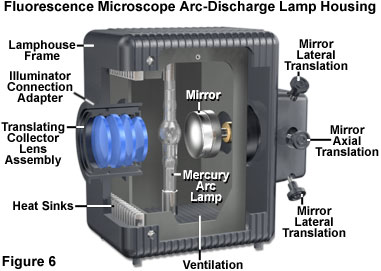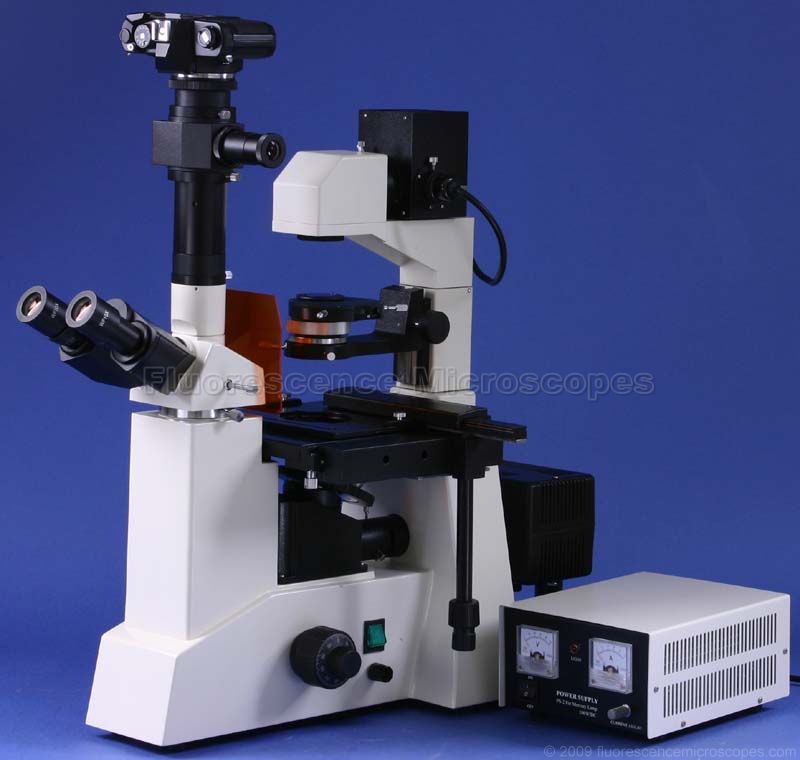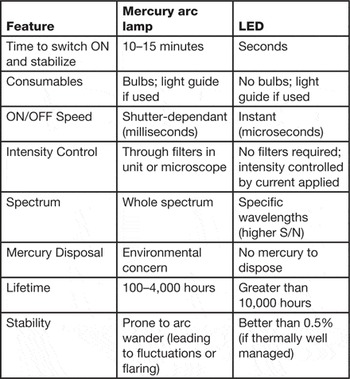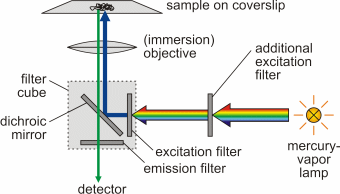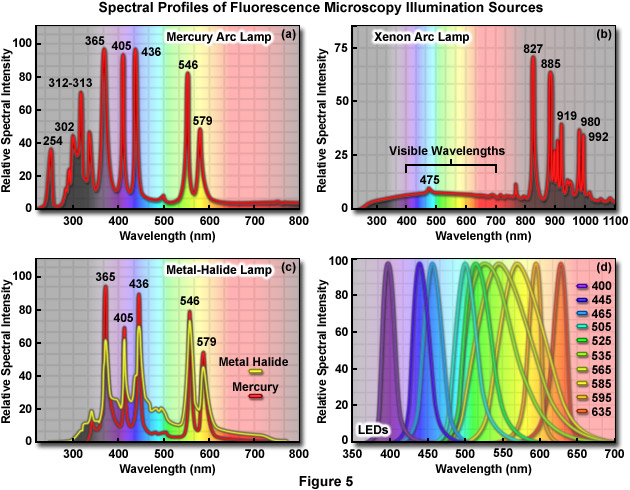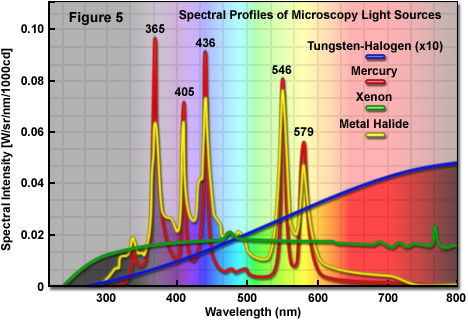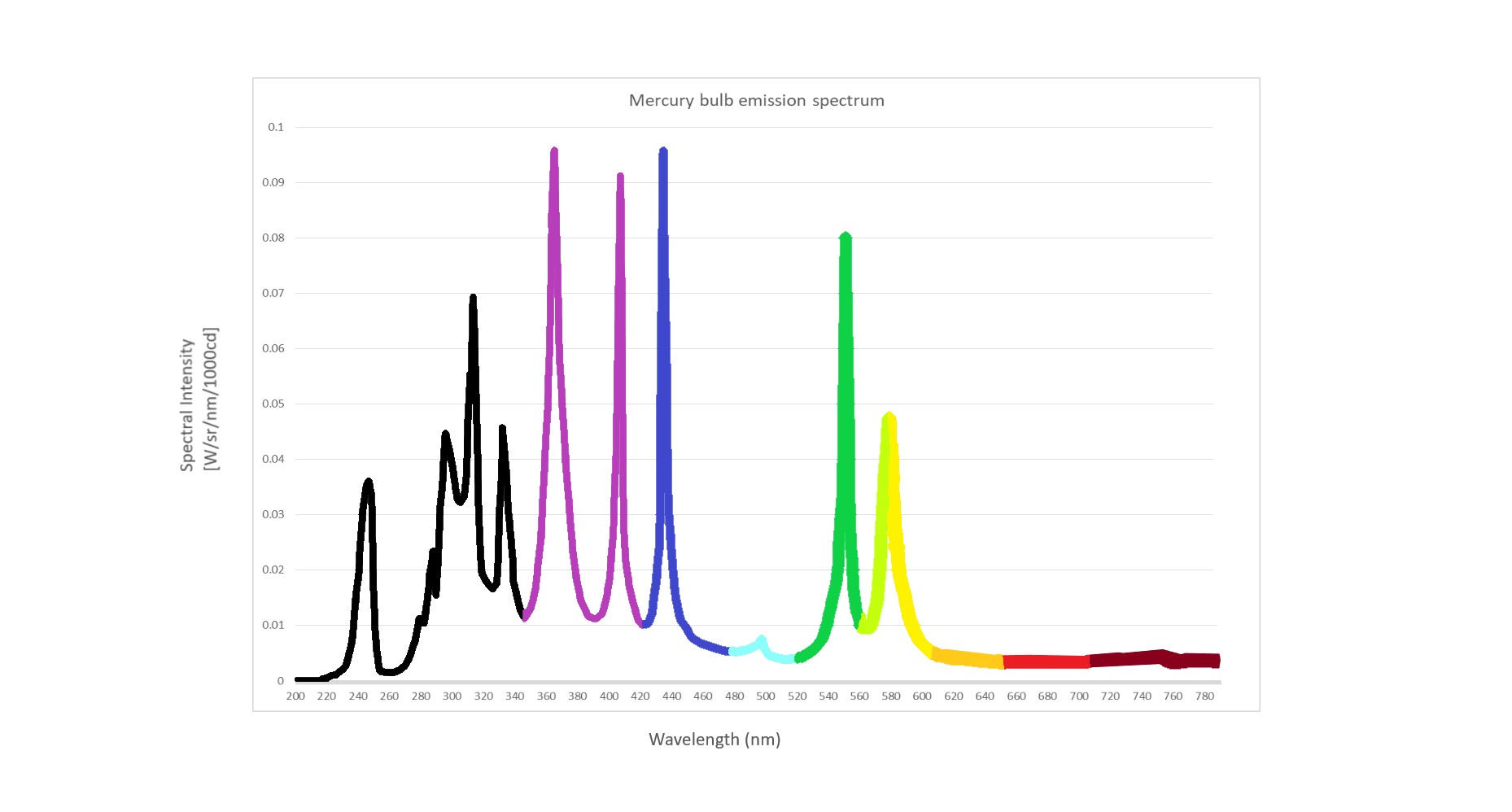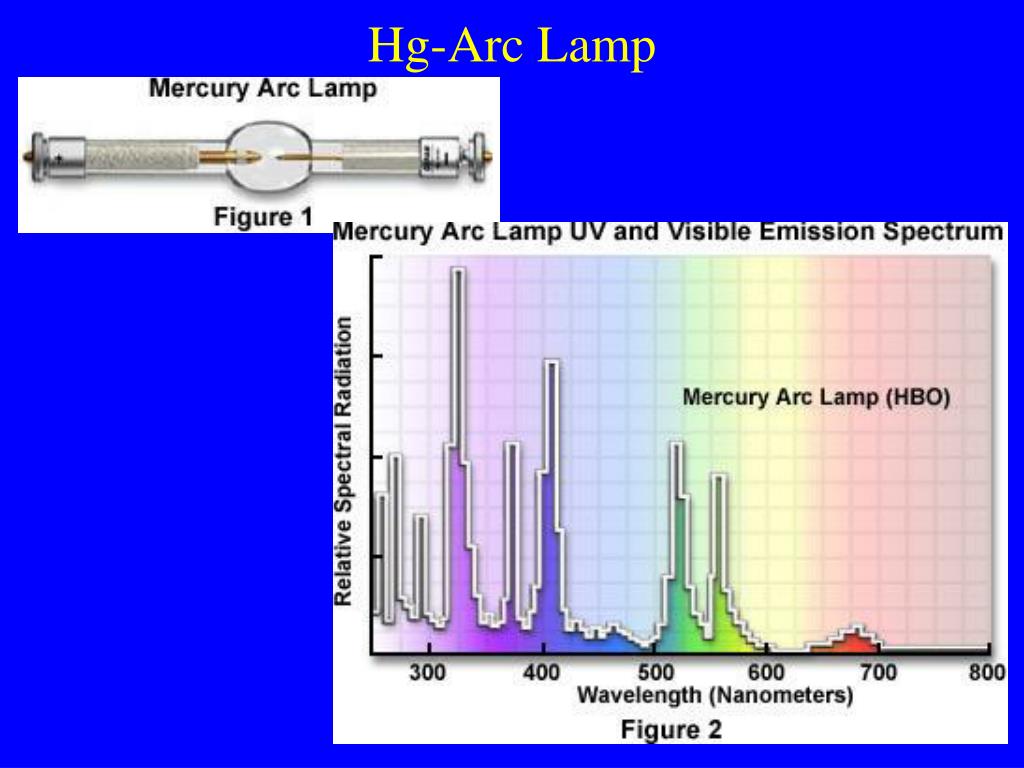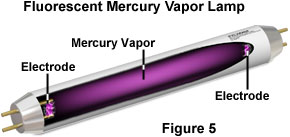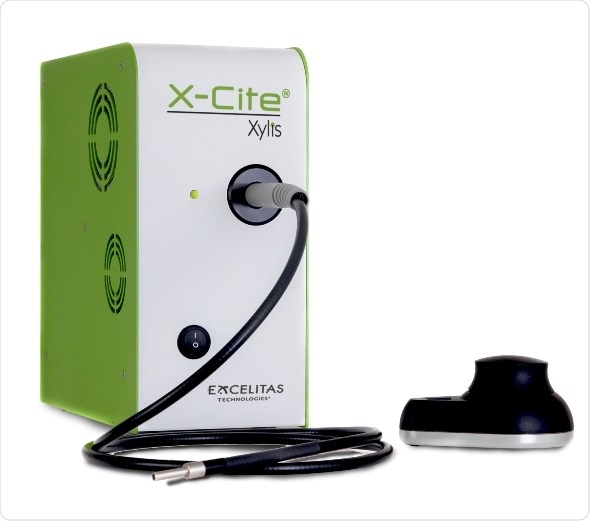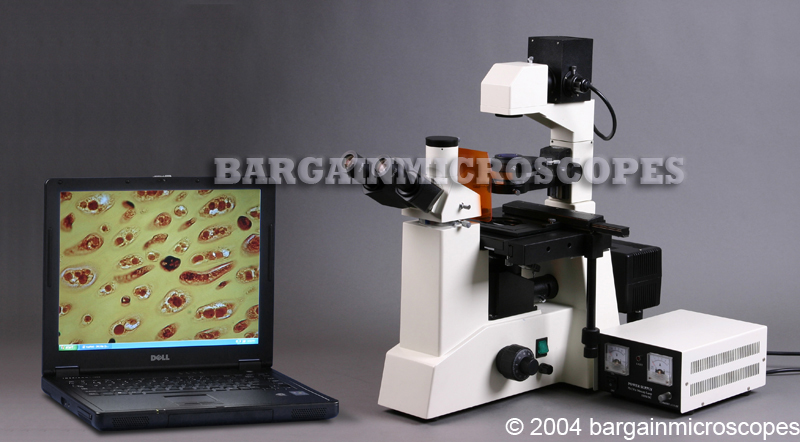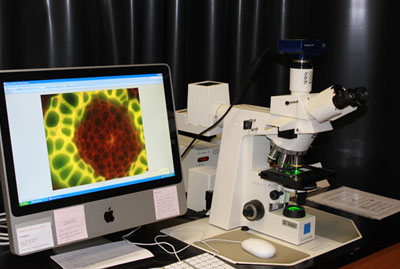The microscope arc discharge lamp external power supply is usually equipped with a timer to track the number of hours the burner has been in operation.
Mercury arc lamp fluorescence microscopy.
The mercury arc lamp has long been the mainstay light source for fluorescence microscopy because of the bright spectral bands it generates within the visible wavelengths.
This accessory has at its upper end the standard royal microscopical society rms thread and can be screwed into the nosepiece.
Explore alignment and focusing of the arc lamp in a mercury or xenon burner which simulates how the lamp is adjusted in a real microscope.
Mercury vapour lamps are used to provide a uv light source for epifluorescence microscopy.
Mercury and xenon arc lamps are now widely utilized as illumination sources for a large number of investigations in widefield fluorescence microscopy.
Because the xenon lamp emission profile features a color temperature of approximately 6000 k close to that of sunlight and lacks prominent emission lines this illumination source is more advantageous than mercury arc lamps for many applications in quantitative fluorescence microscopy.
Regardless of the pitfalls the mercury arc lamp remains a workhorse in fluorescence microscopy and is still considered one of the best illumination sources especially for low abundance in effect those that have sparse targets or weak fluorophores whose excitation maxima coincide with the spectral lines emitted by the hot mercury plasma.
Lamp alignment microscope companies may offer an optional centering screen to facilitate the centering of the image of the lamp arc to the back aperture of the objective.
Regardless of the pitfalls the mercury arc lamp remains a workhorse in fluorescence microscopy and is still considered one of the best illumination sources especially for low abundance in effect those that have sparse targets or weak fluorophores whose excitation maxima coincide with the spectral lines emitted by the hot mercury plasma.
Focus and alignment of mercury and xenon arc lamps.
Their properties mean they are usually superior in comparison to arc lamps and tungsten halogen lamps which were more commonly used in the past.
Arc lamps lose efficiency and are more likely to shatter if used beyond their rated lifetime 2 00 300 hours.
The most common light sources used today are light emitting diodes leds.
Discussion of the properties of various fluorescence filter combinations.
Traditionally almost every research or clinical grade fluorescence microscope has been equipped with a mercury arc lamp.
The mercury short arc lamps commonly used in fluorescence microscopy are gas discharge lamps that contain a mixture of liquid mercury and an inert gas argon or xenon together with a pair of closely spaced electrodes housed within a glass envelope.

